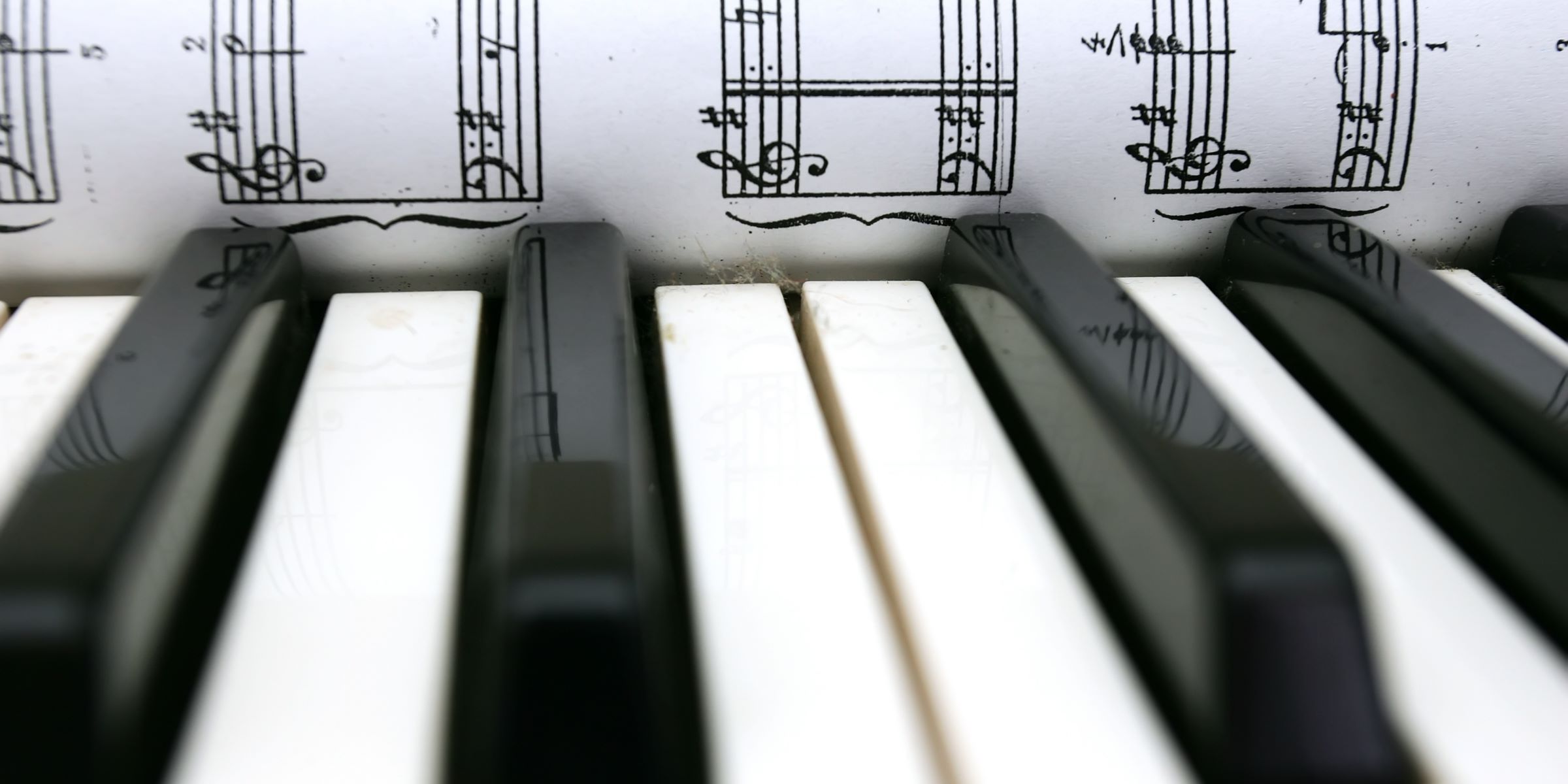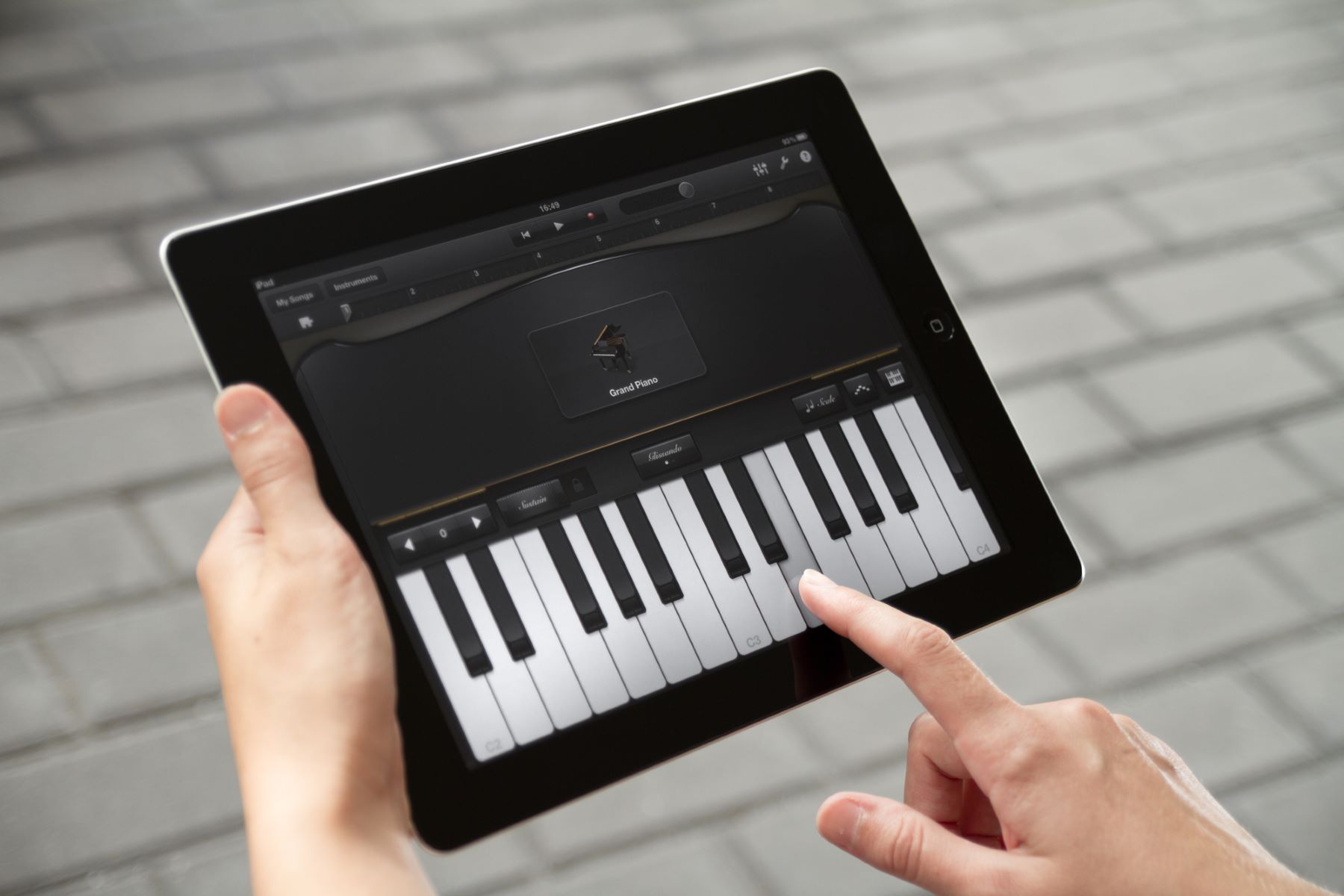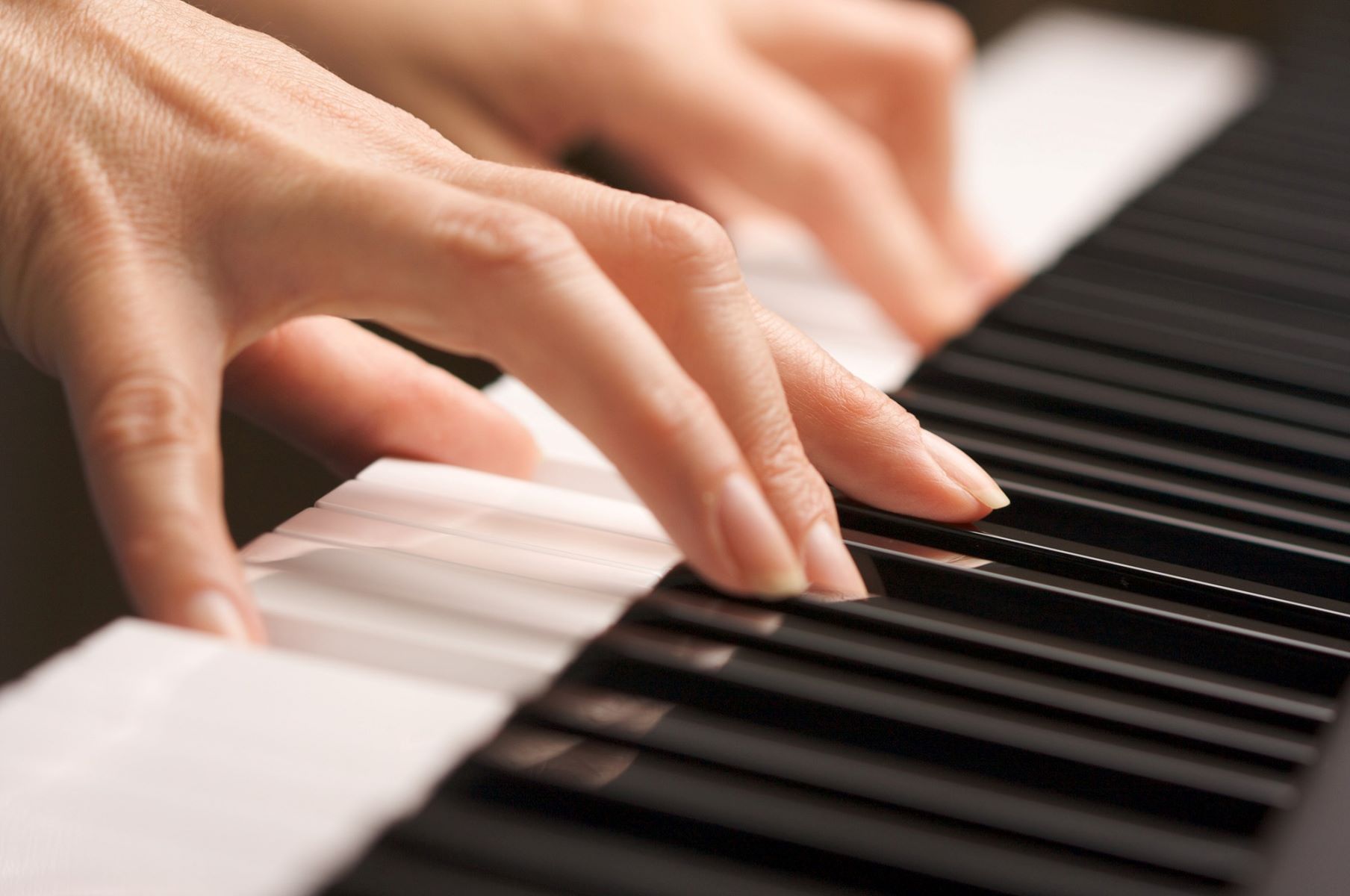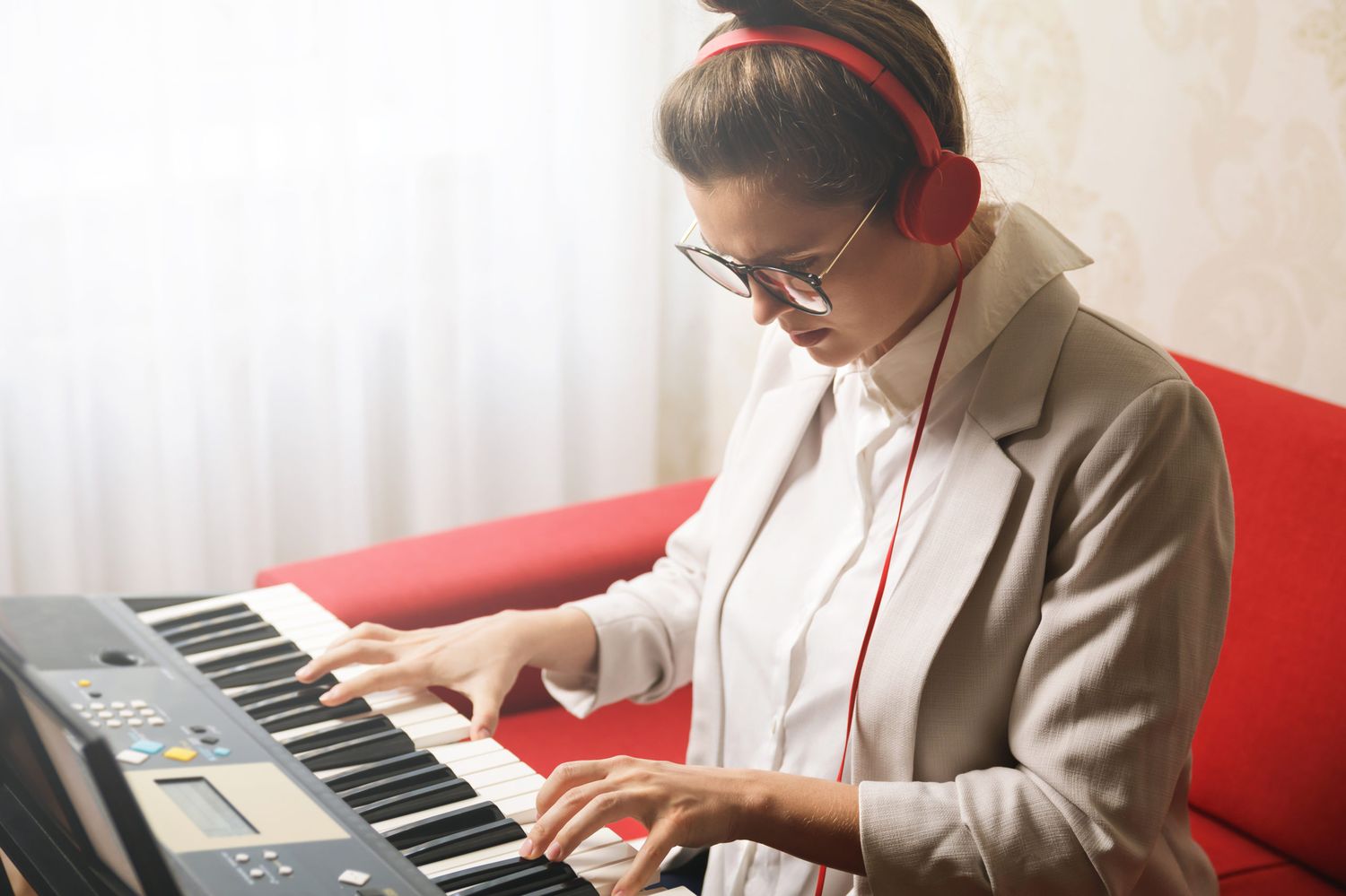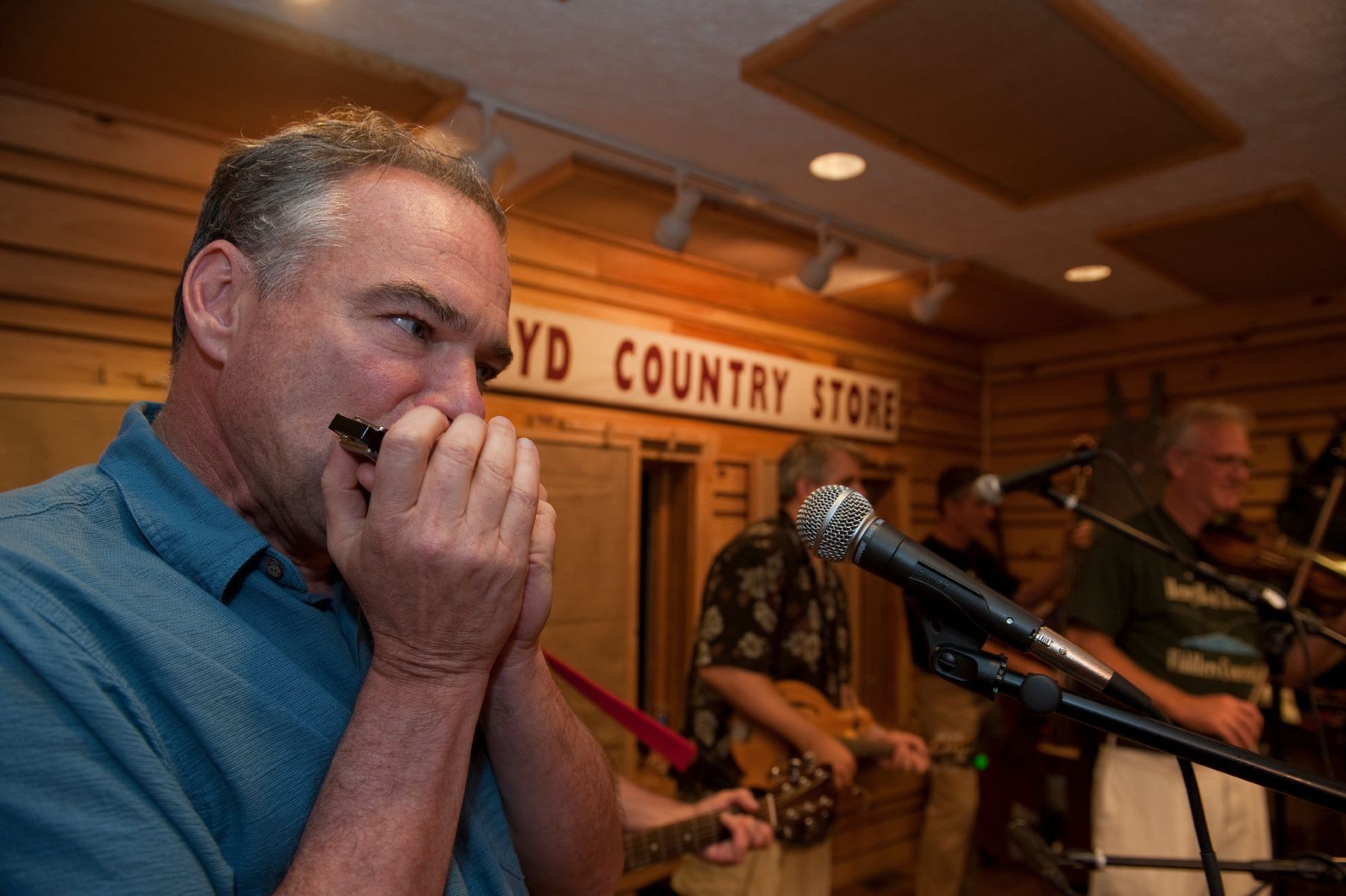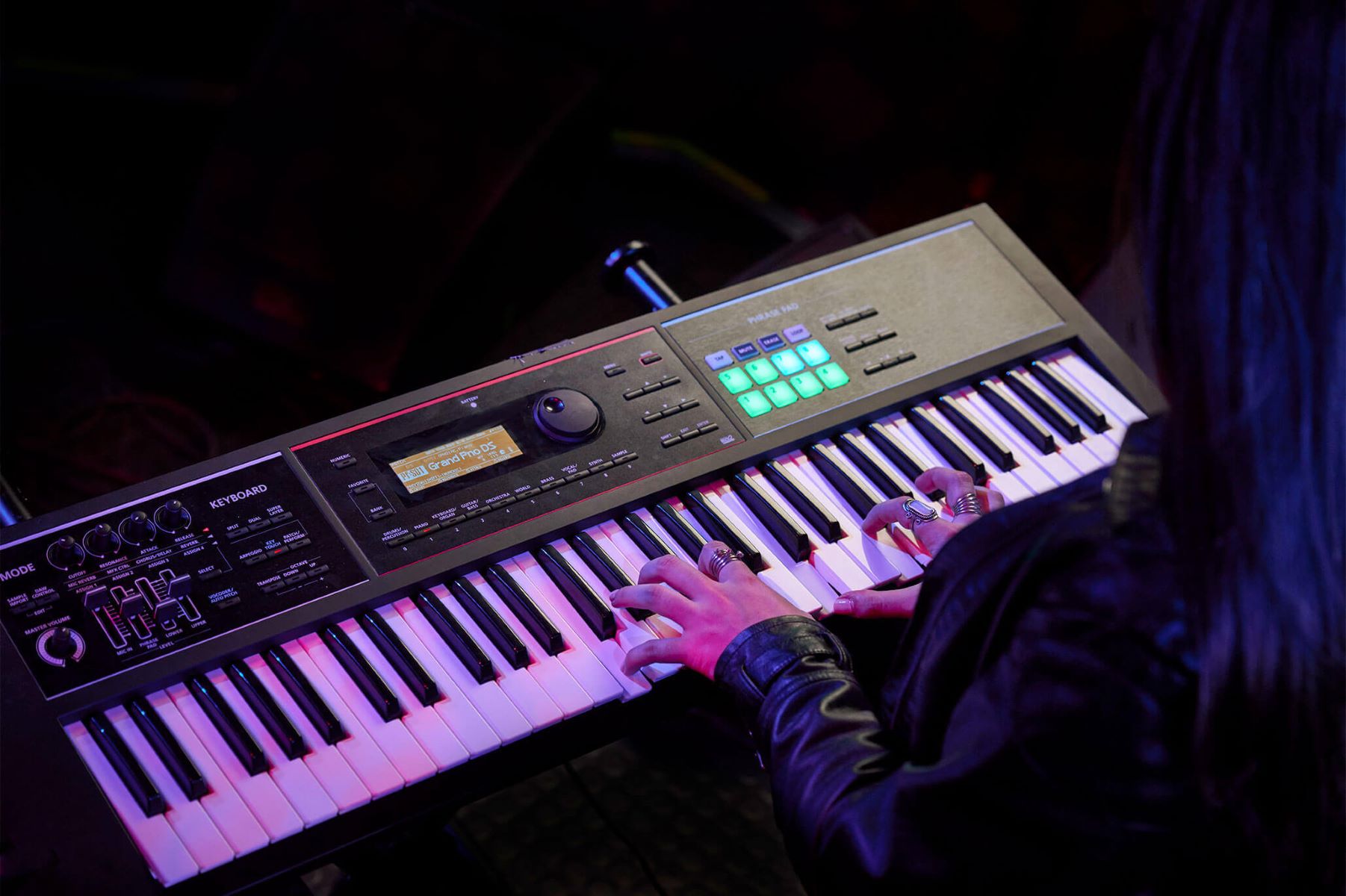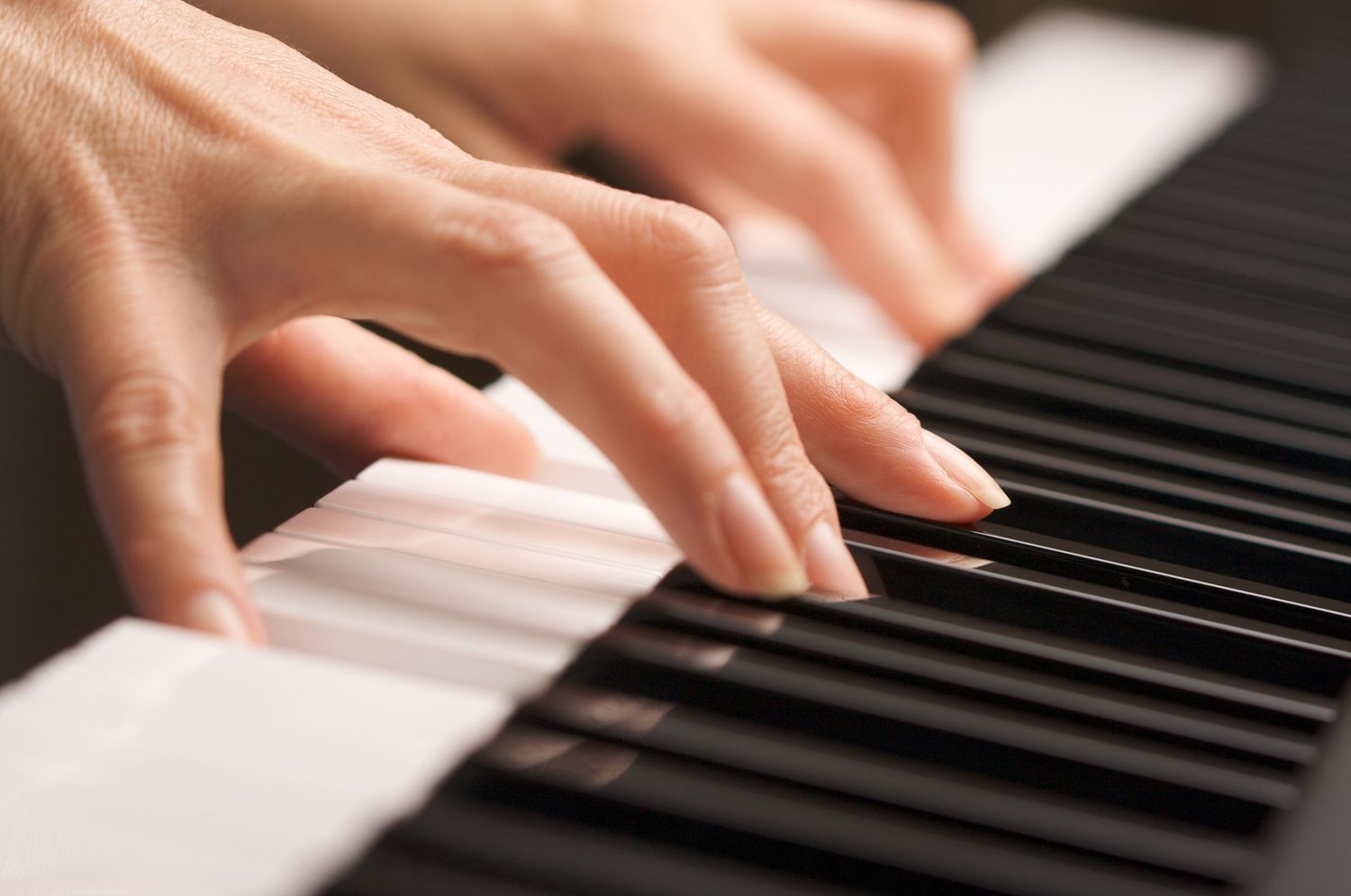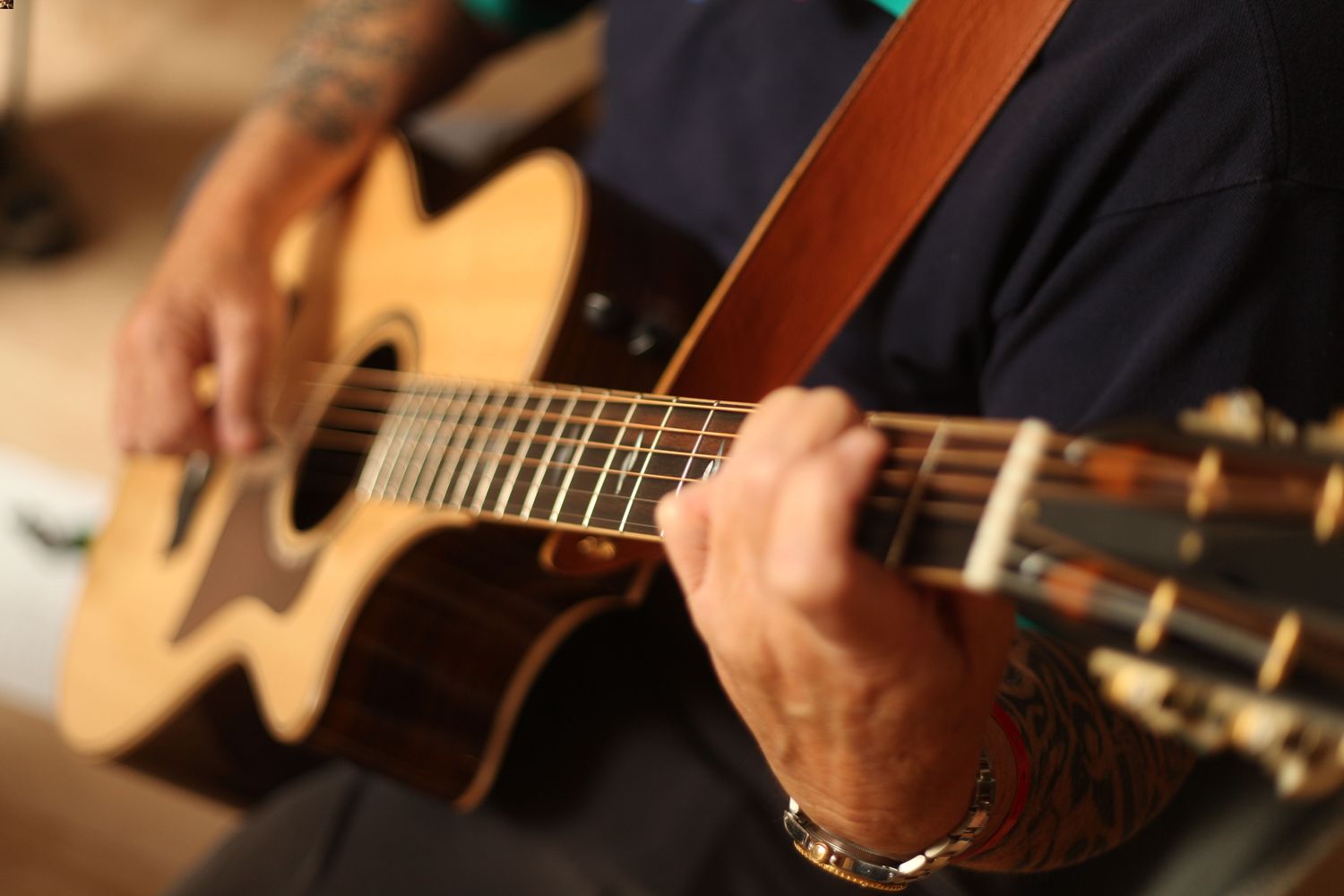Home>Instruments>Piano>How To Learn To Play Piano At Home


Piano
How To Learn To Play Piano At Home
Modified: February 11, 2024
Learn to play piano at home with our step-by-step guide. Master the piano at your own pace with our expert tips and tutorials. Start your musical journey today!
(Many of the links in this article redirect to a specific reviewed product. Your purchase of these products through affiliate links helps to generate commission for AudioLover.com, at no extra cost. Learn more)
Table of Contents
Introduction
Learning to play the piano from the comfort of your own home can be a fulfilling and rewarding journey. Whether you're a complete beginner or looking to brush up on your skills, embarking on this musical endeavor offers a plethora of benefits. Not only does it provide a creative outlet, but it also enhances cognitive abilities, improves dexterity, and cultivates a deep appreciation for music.
The allure of mastering this timeless instrument is undeniable, and with the right approach, dedication, and resources, it's an achievable goal for anyone. In this comprehensive guide, we'll explore the essential steps and considerations for embarking on your at-home piano learning journey. From setting up your practice space to honing fundamental techniques and building a diverse repertoire, this guide will equip you with the knowledge and confidence to progress confidently on your musical odyssey.
As we delve into the intricacies of learning to play the piano at home, you'll discover the indispensable role of a conducive practice environment, the significance of selecting the appropriate equipment, and the wealth of learning resources available at your fingertips. Moreover, we'll delve into the importance of establishing a consistent practice routine, mastering basic techniques, expanding your repertoire, and seeking constructive feedback to fuel your continuous improvement.
Whether you aspire to serenade friends and family with beautiful melodies or aspire to perform on grand stages, the journey of learning to play the piano is a deeply enriching pursuit. So, let's embark on this harmonious expedition, where the keys of the piano will unlock a world of musical wonder and personal growth.
Setting Up Your Practice Space
Creating an inviting and conducive practice space is essential for fostering a productive and enjoyable learning experience. Whether you have a dedicated room or a corner of a shared space, there are key considerations to optimize your practice environment.
Location: Select a space with minimal distractions, where you can focus on your practice without interruptions. Natural light and good ventilation can contribute to a pleasant atmosphere.
Furniture and Layout: Position your piano or keyboard in a way that allows for proper posture and hand positioning. Invest in a comfortable bench or chair that supports good posture and allows for unrestricted movement.
Acoustics: Consider the acoustics of the room. If the space is echoic, adding rugs, curtains, or acoustic panels can help dampen sound reflections and create a more balanced auditory environment.
Organization: Keep your practice space tidy and organized. Ensure that your sheet music, learning materials, and any additional equipment are easily accessible, minimizing the time spent searching for resources.
Inspiration: Personalize your practice space with elements that inspire you. Whether it’s musical artwork, motivational quotes, or mementos from favorite composers, surrounding yourself with inspiration can fuel your passion for learning.
By thoughtfully curating your practice space, you can cultivate an environment that encourages regular practice and sets the stage for meaningful progress in your piano journey.
Choosing the Right Equipment
When embarking on your piano learning journey at home, selecting the appropriate equipment is paramount to your success and enjoyment. Whether you opt for an acoustic piano or a digital keyboard, each option presents unique considerations to ensure an optimal learning experience.
Acoustic Piano: If you prefer the rich, authentic sound and feel of traditional pianos, an acoustic instrument may be the ideal choice. Consider factors such as size, budget, and maintenance requirements when choosing between upright or grand pianos.
Digital Keyboard: Digital keyboards offer versatility and convenience, making them a popular choice for home practice. Look for a keyboard with weighted keys to simulate the touch of an acoustic piano, as well as features such as touch sensitivity and pedal compatibility.
Accessories: In addition to your primary instrument, essential accessories such as a sturdy keyboard stand, adjustable bench, sustain pedal, and headphones can enhance your playing experience and contribute to a comfortable and efficient practice setup.
Technological Integration: Explore keyboards with USB or MIDI connectivity, as well as compatibility with educational apps and software. These features can augment your learning process and provide access to a wealth of digital resources and interactive lessons.
Regardless of your choice, prioritize quality and functionality to ensure that your equipment aligns with your learning goals and preferences. By investing in the right equipment, you set the stage for a fulfilling and immersive piano learning journey within the comforts of your home.
Finding the Right Learning Resources
Access to comprehensive and engaging learning resources is instrumental in nurturing your piano skills at home. Whether you prefer structured courses, interactive apps, or a combination of various learning materials, the abundance of resources available can cater to diverse learning styles and proficiency levels.
Online Courses and Tutorials: Platforms offering online piano courses, video tutorials, and interactive lessons provide structured guidance and flexibility. Look for reputable websites and instructors that align with your musical interests and skill level.
Sheet Music and Songbooks: Building a collection of sheet music and songbooks featuring a variety of genres and difficulty levels allows you to expand your repertoire and explore diverse musical styles. Consider incorporating pieces that inspire and challenge you, fostering continuous growth.
Educational Apps and Software: Utilize educational apps and software designed for piano learners, offering features such as interactive exercises, progress tracking, and virtual keyboards. These tools can supplement traditional learning methods and add an element of interactivity to your practice sessions.
Online Communities and Forums: Engaging with online piano communities and forums provides opportunities to seek advice, share experiences, and connect with fellow learners. Participating in these communities can offer valuable insights, support, and motivation throughout your learning journey.
Instructional Books and DVDs: Explore a range of instructional books, DVDs, and multimedia resources authored by renowned pianists and educators. These resources often delve into music theory, technique development, and historical context, enriching your understanding of the instrument.
By curating a diverse array of learning resources, you can tailor your practice sessions to encompass a holistic approach to piano education. Embrace the versatility of digital platforms, traditional sheet music, and interactive tools to cultivate a well-rounded and enriching learning experience within your home environment.
Establishing a Practice Routine
Consistency and structure are fundamental to making meaningful progress in your piano learning journey. Establishing a well-rounded practice routine not only cultivates discipline but also maximizes the effectiveness of your practice sessions. Here are key considerations for crafting a balanced and sustainable practice routine:
- Schedule: Dedicate specific time slots for practice in your daily or weekly schedule. Consistency is key, whether you opt for shorter, frequent sessions or longer, less frequent ones.
- Warm-Up Exercises: Begin each practice session with warm-up exercises to promote finger agility, dexterity, and hand coordination. Scales, arpeggios, and finger exercises are beneficial for priming your fingers and preparing them for more challenging repertoire.
- Technical Practice: Allocate time for focused technical practice, addressing specific techniques, sight-reading, and rhythm exercises. This segment enhances your overall proficiency and lays a solid foundation for tackling diverse musical pieces.
- Repertoire Study: Dedicate a portion of your practice time to learning and refining specific pieces from your repertoire. Balance the exploration of new material with the review and polishing of previously learned pieces to maintain a well-rounded repertoire.
- Ear Training and Theory: Integrate ear training exercises and music theory study into your routine to deepen your understanding of musical concepts and develop a discerning ear for pitch, harmony, and rhythm.
- Performance Practice: Incorporate simulated performance sessions into your routine, where you play through pieces as if performing for an audience. This practice builds confidence and helps you acclimate to the pressure of public performance.
Remember that the quality of practice is as important as the quantity. Strive for focused, deliberate practice, and be mindful of your posture, hand positioning, and expression throughout your sessions. By crafting a well-structured practice routine that encompasses diverse facets of musical development, you lay the groundwork for consistent growth and proficiency in your piano playing.
Learning Basic Techniques
Mastering fundamental techniques forms the cornerstone of proficient piano playing. Whether you’re a novice or revisiting the basics, honing essential skills sets the stage for musical expression and technical prowess. Here are key techniques to prioritize in your learning journey:
- Hand Positioning: Cultivate proper hand positioning to facilitate fluid and precise movement across the keyboard. Maintain a relaxed posture, curved fingers, and balanced wrist alignment to optimize control and agility.
- Finger Independence: Develop finger independence through exercises that target individual finger strength and coordination. Practice scales, arpeggios, and finger independence drills to enhance dexterity and control.
- Articulation and Dynamics: Explore the nuances of articulation and dynamics, encompassing techniques such as staccato, legato, accents, and varied touch. These elements contribute to expressive and captivating performances.
- Pedal Technique: Familiarize yourself with pedal usage, understanding the nuances of sustain, sostenuto, and una corda pedals. Mastering pedal technique enhances the resonance and emotive quality of your playing.
- Sight-Reading: Cultivate sight-reading skills by regularly exposing yourself to diverse musical scores. Practice reading and interpreting new pieces, gradually expanding your fluency in deciphering notation and musical phrasing.
- Rhythm and Timing: Develop a keen sense of rhythm and timing through metronome practice, rhythmic exercises, and attentive listening. Precision in rhythmic execution elevates the clarity and impact of your performances.
Embrace a methodical approach to mastering these techniques, dedicating focused practice time to each element. Additionally, seek guidance from instructional materials, online tutorials, and instructional books authored by esteemed pianists and educators. By prioritizing the refinement of basic techniques, you lay a robust foundation for artistic expression and technical proficiency at the piano.
Building Your Repertoire
Expanding your repertoire with a diverse selection of musical pieces is pivotal in nurturing your growth as a pianist. As you embark on this enriching journey, consider the following strategies to curate a well-rounded and captivating repertoire:
- Exploring Varied Genres: Embrace a spectrum of musical genres, including classical, jazz, contemporary, and popular music. Diversifying your repertoire exposes you to different styles, fostering versatility and musical appreciation.
- Progressive Difficulty: Select pieces that offer a gradual progression in difficulty, allowing you to challenge yourself while steadily advancing your skills. Striking a balance between approachable and more demanding repertoire ensures continuous growth.
- Expressive Pieces: Incorporate expressive and emotive pieces that resonate with you personally. Connecting with the musical content on an emotional level enhances your interpretive depth and artistic engagement.
- Etudes and Exercises: Integrate etudes and technical exercises into your repertoire to address specific technical challenges. These pieces serve as valuable tools for honing particular skills and overcoming technical hurdles.
- Performance Opportunities: Select pieces that align with your performance goals, whether for informal gatherings, virtual recitals, or future public performances. Tailoring your repertoire to potential performance settings fosters confidence and stage readiness.
Additionally, leverage resources such as curated repertoire lists, recommendations from experienced pianists, and music educators to discover new pieces and composers. Embrace a spirit of exploration and curiosity as you navigate the vast landscape of piano repertoire, allowing your selections to reflect your evolving musical identity and aspirations.
Seeking Feedback and Improvement
Embracing a growth-oriented mindset and seeking constructive feedback are pivotal steps in refining your piano skills and fostering continuous improvement. Here are valuable strategies to guide your quest for feedback and advancement in your musical journey:
- Mentorship and Instruction: Engage with experienced pianists, instructors, or mentors who can offer personalized guidance and constructive critique. Their insights can illuminate areas for improvement and provide tailored strategies for growth.
- Peer Collaboration: Collaborate with fellow pianists or musicians, exchanging feedback and insights on each other’s performances. Peer interactions foster a supportive community and offer diverse perspectives on musical interpretation and technique.
- Recording and Self-Assessment: Record your practice sessions and performances to objectively evaluate your playing. Self-assessment allows you to identify areas of strength and areas needing refinement, nurturing a reflective and analytical approach to your progress.
- Performance Opportunities: Embrace performance opportunities, whether in informal settings or public platforms, to showcase your skills and receive audience feedback. Live performances provide valuable experience and offer real-time insights into your playing.
- Continual Learning: Maintain a thirst for knowledge and growth by seeking out workshops, masterclasses, and educational events. Exposure to diverse learning experiences fuels your artistic development and broadens your musical horizons.
Embrace feedback as a catalyst for growth, recognizing that constructive critique is an invaluable tool for refining your skills and deepening your artistry. By actively seeking feedback from a variety of sources and remaining open to continual improvement, you pave the way for a dynamic and enriching musical journey.
Conclusion
Congratulations on embarking on the harmonious expedition of learning to play the piano at home. As you traverse this musical odyssey, you’ve laid the groundwork for a fulfilling and enriching journey filled with growth, creativity, and personal expression. By establishing a conducive practice space, selecting the right equipment, and embracing diverse learning resources, you’ve equipped yourself with the essential tools for success.
As you delve into the intricacies of hand positioning, finger independence, and expressive techniques, you’re cultivating a solid foundation of fundamental skills that will elevate your playing to new heights. Your commitment to crafting a well-rounded practice routine and curating a diverse repertoire reflects your dedication to continuous improvement and artistic exploration.
Remember that seeking feedback and embracing a growth-oriented mindset are pivotal in refining your skills and nurturing your musical identity. Whether you aspire to serenade loved ones with soul-stirring melodies or grace grand stages with captivating performances, your journey as a pianist is a testament to your passion and dedication to the art of music.
As you navigate the vast landscape of piano learning, cherish the moments of inspiration, the triumphs of progress, and the joy of musical discovery. Embrace the challenges as opportunities for growth, and celebrate the milestones as testaments to your commitment and perseverance.
May the resounding notes of the piano accompany you on this transformative voyage, igniting your spirit and illuminating the path to musical mastery. With each keystroke, you breathe life into melodies, and with each practice session, you nurture the blossoming artistry within. Your journey as a pianist is a symphony in the making, with each chapter unfurling a tapestry of passion, dedication, and boundless creativity.
So, as you continue to unlock the musical wonder within the keys of the piano, may your journey be adorned with the crescendos of progress, the harmonies of inspiration, and the enduring melodies of your unwavering dedication. Let the piano be your steadfast companion, guiding you through the realms of musical expression and personal fulfillment.

